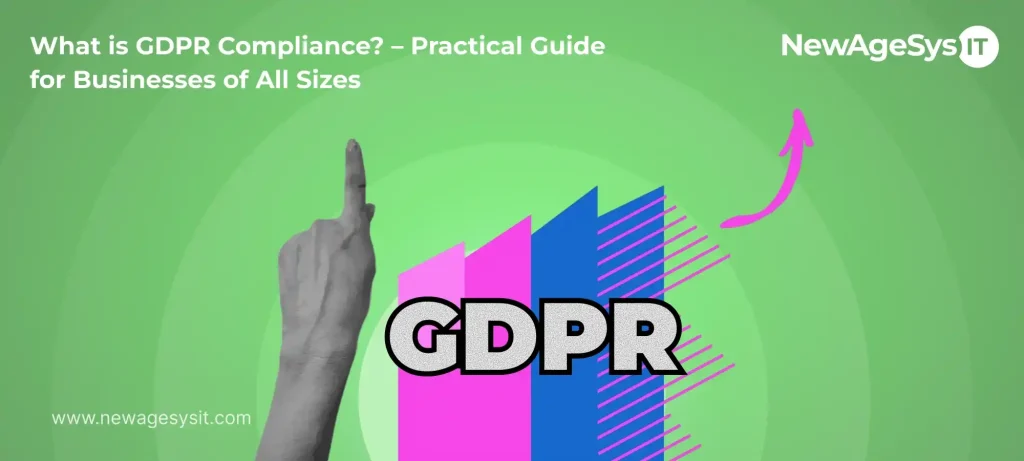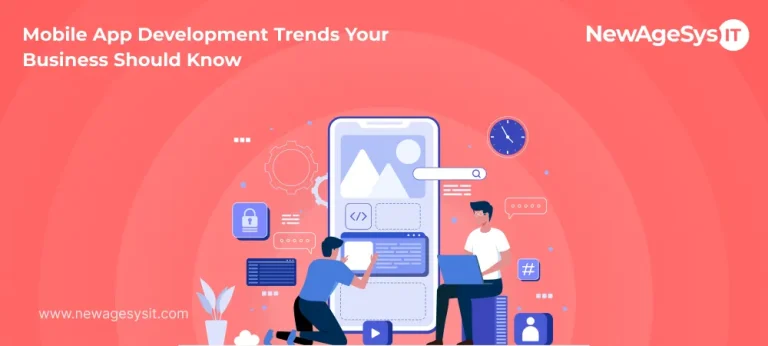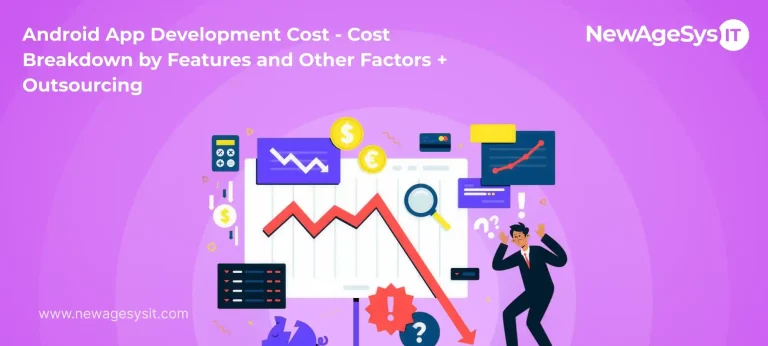| Key Takeaways: Any business that don’t comply GDPR compliance and handles EU citizens’ data can face penalties up to €20M or 4% of global turnover. Core GDPR requirements involve explicit user consent, data minization, strong security, user rights, and breach notification within 72 hrs. GDPR has inspired data privacy laws in more than 12 countries, including nations like Japan, Canada, Australia, etc. Businesses need to apply GDPR in aps, websites, SaaS, and platform via different strategies like consent banners, encryption, user rights tools, etc. While compliance feels restrictive, but it does open doors for a market 450+ customers. |
What is GDPR compliance? – Is it a hindrance, a difficulty, or something that is beneficial for the people of the EU in a larger consensus?
For businesses looking to expand in the EU region, GDPR can be a tough milestone to cross. However, it is inevitable because, whatever you feel about it, it is a mandate. In fact, there have been notable incidents where companies suffered due to a lack of consistent GDPR data compliance, such as:
- CNIL fined Google for €50M in 2019, pointing towards issues like a lack of transparency and no informed consent in personalization
- British Airways paid a fine of £20 million for their 2018 breach, where 400,00+ customers’ data got exposed due to weak security & late detection.
- Fidzup (French AdTech Startup) shut down by late 2019 after receiving a notice from CNIL for unlawful consent practices, failing to recover after 5 months of resolving.
Then why are foreign businesses interested in investing their time and money in the EU? Well, it is a high-value market with customers having strong purchasing power. Also, the population is heavily reliant on global tech providers, + the transparent policies of the regime make the geography an overall attractive proposition for businesses.
And, if you are thinking of getting GDPR compliance for software development in IT, then don’t stress. With this article, we will be providing all the necessary details around general data protection regulation compliance for a business or team of developers in brief, to easily make your service compliant.
So, let’s begin with this GDPR compliance guide!
What is GDPR Compliance?
Now, to understand the importance of GDPR compliance, it is critical for us to understand what it means, what it entails, what the necessary requirements are, and most importantly, penalties.
So, let’s first define GDPR data compliance:
The IAPP (International Association of Privacy Professionals, leading privacy experts) defines it as:
“The GDPR is a comprehensive data protection law that sets guidelines for the collection and processing of personal information of individuals who live in the European Union (EU).”
Aspects and Entities Regulated by GDPR Data Compliance + Requirements:
For ease of understanding, we have divided this segment into two tables. The earlier would be dealing with the aspects of GDPR compliance for development. While the latter talks about the entities that are covered by this regulation.
To begin, there are more than a few aspects of GDPR compliance regulations, covered below:
| Aspect | What It Covers |
|---|---|
| Data Collection & Consent | Must be lawful, transparent, and based on explicit user consent. |
| Data Use & Processing | Limited to specific and legitimate purposes only. |
| User Rights | Individuals can access, correct, delete, or transfer their data. |
| Data Security | Requires strong safeguards and breach notifications within 72 hours. |
| Cross-Border Transfers | Data moved outside the EU must meet GDPR standards. |
Now, let’s check out all the entities that are covered under GDPR compliance rules:
| Category | Examples |
|---|---|
| Software & Applications | Web apps, SaaS platforms, mobile apps |
| Websites & E-Commerce | Online stores, marketplaces, and booking platforms |
| Cloud Services | Data storage, hosting providers, SaaS vendors |
| Business Platforms | CRMs, ERPs, HR software, productivity tools |
| Marketing & Ad Tech | Email marketing tools, analytics, and ad networks |
| IoT & Connected Devices | Wearables, smart home apps, healthcare devices |
| Software Development Companies | App developers, enterprise software builders, and IT consultancies |
Finally, it is time to assess the GDPR compliance requirements that are by and large applicable to IT products and businesses operating in the industry, in clearer terms:
- To obtain a clear and informed user consent before collecting any personal data
- Collection and processing of data that is only for specific and lawful purposes
- Implementing data minimization on overall collection, i.e., collect only what’s necessary
- Give users the right to access, rectify, erase, or transfer their data at their whim
- Ensuring strong data security measures, such as encryption, access control, and breach response
- Notify relevant authorities and users whose data was breached, within 72 hours
- Applying privacy by design and by default in systems and software used by the business
- Regulating any third-party vendors that utilize user data and any cross-border data transfers
Penalties and Scope Associated with General Data Protection Regulation Compliance:
We have already provided notable examples in terms of companies that got penalized because of ineffective GDPR implementation. Below is the explanation:
| Category | Details |
|---|---|
| Scope | Applies to all organizations processing personal data of EU/EEA (European Economic Area) individuals, including businesses outside the EU targeting EU users |
| Penalties | Fines up to €20M or 4% of global annual turnover, whichever is higher; reputational damage with potential legal actions |
Why GDPR Matters for the U.S. and Other Geographies?
Again, we briefly shared GDPR why matters for countries, including the U.S., that want to do business in the EU region in the introduction. However, there is more to the story.
Since the dawn of GDPR as a regulation, it has endowed its transformative power on privacy and regulation beyond the EU region. It has compelled businesses from the U.S. and other global companies to either adapt or face consequences.
Several transformative effects it has had so far are:
- GDPR’s scope is extraterritorial. It means that any non-EU company that serves within the EU region needs to comply, or face fines or legal actions.
- The global adoption has shifted the influence from local compliance, making GDPR a board-level issue in all international enterprises.
- Over time, GDPR has become a global baseline for data handling, driving consumer expectations and legislative efforts in nations like the U.S..
Key Stats on Global GDPR Influence:
- The cumulative fine imposed as per GDPR by January 2025 reached €5.88 billion, with tech firms like Meta and Amazon giving out major penalties.
- More than 75% of the world is now covered by privacy regulations that are inspired by GDPR. This covers 120 countries that have implemented similar laws by 2024.
- Around fourteen states in the U.S. are enforcing data privacy laws, with six more becoming effective by 2026.
- Up to 51% of the world’s executives rank GDPR as their top five priorities for compliance and risk.
- Nations like China, Japan, South Korea, Canada, and Australia have already amended or introduced new data protection regulations based on the blueprint of GDPR.
How to be GDPR Compliance-Ready – Organizational Steps to Readiness
While it is important to keep GDPR data compliance-related aspects under your thumb, there is more to stay in line with GDPR compliance rules. So, for any organization that is looking to stay or become compliance-ready, here are a few organizational steps to maintain consistent and sustainable compliance:
- Appoint a Data Protection Officer (DPO): In most cases, any startup that crosses borders soon becomes an enterprise. And, in this situation, in most cases, processing of large volumes of personal or sensitive data becomes inevitable. Having a DPO overseeing GDPR activities sustains your data protection activities as per current norms and acts as a liaison with supervisory powers.
- Conduct Employee Training: Employees are the first line of defense against non-compliance. So, providing regular training sessions keeps them on track, ensuring that GDPR principles are met, potential risks are mitigated, and best practices are followed while handling data.
- Develop Breach Response Protocols: We’ve talked about it. However, just to stress a bit more. Beyond technical safeguards, organizations must focus on establishing internal reporting lines, communication strategies, and escalation processes handy in times of breach. Notifying the users and the authorities within 72 hours is not a choice but a mandate.
- Maintain Compliance Documentation: Maintain detailed records of data processing activities, consents, security measures, and the compliance efforts taken. This document of records would serve as proof of accountability for you during audits and checkups.
- Regular Compliance Audits: Beyond monitoring the applications, it is also important for an organization to conduct periodic checkups. This keeps your business processes compliant in the long run.
How to Implement GDPR Compliance on Website and Software Development?
If we start to apply GDPR compliance rules on IT products, then the application would be largely implemented on websites and software (that, of course, includes apps). Why? Because the majority of entities we talked about earlier come under these two categories. So, covering these implementations covers most of the use cases.
Therefore, here are the key steps to implement GDPR compliance for development that we, i.e., NewAgeSys, have aggregated over the years through our extensive experience:
- Data Mapping and Audit
In this step, we usually begin by identifying all the personal data that our clients’ website or app would collect. This includes entries like names, emails, IP addresses, etc.
Based on this data, we create a document on how this data will be processed, stored, and shared with third parties.
- Minimize Data Collection
The most essential aspect of GDPR data compliance is to minimize data collection as much as possible. Basically, the system we will create aims to collect only the most necessary data points and abstain from storing any sensitive data unless highly required.
- Obtain Explicit Consent
Another important aspect of GDPR implementation is obtaining explicit consent for data collection from users.
To do so, we employ strategies like:
- Adding clear cookie consent banners
- Provide checkboxes with an opt-in/opt-out feature for newsletters, notifications, or tracking.
- Maintaining a record of user consent in the database
The strategies above largely deal with website creation. However, for apps, the strategies could be options for permission (location, notification, data sharing, etc.), consent forms, double opt-in, etc.
- Transparent Privacy Policies
Creating and maintaining transparent privacy policies is also key to abiding by GDPR compliance requirements. So we draft and publish user-friendly privacy and cookie policies for the product. And, make sure that all the users who use the product know about policies related to data usage, retention, and their rights (access, delete, portability).
- Secure Data Storage and Processing
At this stage, we employ techniques to protect and process data. We primarily use encryption like SSL/TLS for data in transit, AES for data at rest, etc. Further on, we implement access controls and conduct regular security testing utilizing penetration testing, vulnerability scans, etc.
- User Rights Management Features
Some of the additional work that we usually do to create a GDPR compliant application is creating tools for users. These tools allow them to download their data and even provide ways to edit or delete their information at their discretion.
- Third-Party Integrations
It is important to know that it is not necessary that the data breach occurs at the client’s infrastructure. Instead, several times, the third-party entities are vulnerable. So, it is important for anyone to use analytics, payment gateways, cloud services, etc., that are GDPR-compliant. To ensure that, we get our vendors to sign data processing agreements (DPAs).
- Data Breach Preparedness
Technology today has no limit. Things are evolving, and in this continuous evolution, new vulnerabilities often come to the surface. These vulnerabilities can be exploited by attackers. So, it becomes essential to stay prepared for any unforeseen breach.
So we implement a logging and monitoring system for tracking any suspicious activity. Also, as per GDPR, it is a mandate to notify users and authorities within 72 hours of the breach. Therefore, we help create that procedure.
- Continuous Monitoring and Updates
Once the product is completed, regular audits are necessary to assess compliance. So, we deliver the necessary knowledge transfer to the client’s developer on securing the code and data protection principles.
GDPR Data Compliance in Daily Practice – Safeguarding Future of Compliant Companies
GDPR compliance rules are imposed by companies where practices related to data collection, obtaining consent from the customer, storage, and sharing are involved.
In practice, these are the following steps we recommend to maintain GDPR compliance for development-related tasks or any other task that shares the same umbrella of data collection and management:
- Identify and Map Data – The first step is to assess whatever personal data is being collected, where it came from, how it flows within the business, and most importantly, where it is shared.
- Establish Legal Basis & Obtain Consent – Now, ensure that all the user data collection and processing that happens is done on a lawful basis. To do so, you take routes like contracts, legal obligations, or explicit consent from users.
- Update Policies and Notices – For any new service or update that handles data collection, start drafting or revising privacy policies. The aim of these policies should be to inform users about data collection, its purpose, retention, and even their rights.
- Secure Data Storage & Processing – Apply encryption, role-based access, and secure servers to protect stored data from any breach or unauthorized use.
- Implement Data Minimization – Only collect data that is necessary for operations. And, keep it in your system till the time of usage. After that, delete and anonymize your old records.
- Manage Third-Party Sharing – Make sure to use data processing agreements (DPAs) with vendors and partners, SaaS Platforms, etc., ensuring that they comply with GDPR requirements.
- Enable User Rights – Offer mechanisms to the users that allow them to access, rectify, erase, or transfer data with ease. Basically, provide them the “right to be forgotten” and data portability.
- Document and Monitor Compliance – Maintain records of all your processing activities. Additionally, train employees and conduct regular audits to ensure that GDPR compliance regulations are fulfilled.
GDPR Compliance Regulations Across Industries
Europe’s GDPR compliance is not limited to a few industries. Rather, it puts its discretion on all industries where personal data of EU citizens is collected, processed, and stored. The focus of this discretion largely remains the same across industries. However, the context changes.
Putting a nail on this context, here are a few examples as shared in the table below:
| Industry | Key Focus | Example |
|---|---|---|
| Finance | Data security & fraud prevention | Banks encrypt transactions & allow data deletion |
| Healthcare | Protection of sensitive health data | Hospitals need explicit consent & anonymized records |
SaaS/Tech | Consent & third-party compliance | SaaS apps use cookie banners & DPAs with vendors |
Small Business | Transparency & minimal collection | E-commerce shop uses opt-in checkboxes & clear policies |
Final Note!
After 25th May 2018, when GDPR was imposed, it became a headache for multiple businesses. However, if we see things from the perspective of the EU, with data expansion at such an enormous level, regulations like GDPR were simply beacons that were dormant waiting to be activated. In fact, in hindsight, if we assess, all the businesses want their users to like their service and its experience. This regulation inadvertently turns this into a practice. So, being compliant automatically becomes the next strategic step that several companies may have adopted consequentially without the imposition of a regulation like GDPR. Why? You save and protect what is necessary, you democratize handling personal data, and you only approach potential users.
Saying this, we hope this article explains the query “What is GDPR compliance?,” providing you a segue to create your next EU-ready service. Also, at the end note, NewAgeSys has been working in the development outsourcing industry for more than 25+ years. Throughout the years, we have delivered multiple projects with varying complexities while finding solutions for requirements like GDPR compliance. So, if you are in need of a partner today or in the future, the contact us page is right there.
FAQs:
Q.1 Share the overview of the General Data Protection Regulation in a single line?
In a single line, GDPR is an EU regulation that sets strict rules for data protection for organizations that collect, process, and store the data of EU or EEA citizens.
Q.2 What does the General Data Protection Regulation (GDPR) regulate?
Here are the aspects regulated by GDPR:
- Collection of personal data
- Processing of personal data
- Storage of personal data
- Sharing & transfer of data
- Consent management
- User rights
- Breach notification
- Accountability and documentation
Q.3 Who is responsible for data protection compliance as per GDPR?
As per GDPR, this key role is played by entities like:
- Data Controller – One who decides why and how personal data is processed.
- Data Processor – Third parties/vendors that process data on behalf of the controller.
- Data Protection Officer (DPO) – Oversees GDPR compliance, risk management, and communication with authorities. Required in certain organizations only.
- Management/Employees – All the staff who handle internal GDPR policies and training.
Q.4 What are the GDPR requirements for third-party vendors?
These are some of the requirements that need to be fulfilled by third-party vendors:
- Written Data Processing Agreement outlining controller processing terms, responsibilities, and compliance
- Lawful processing as per documented instructions
- Implementation of appropriate technical and organizational safeguards
- No engagement with other processors without prior authorization
- Prompt notification in case of any breach
- Supporting user rights
- Maintenance of processing activities, keeping it audit-ready
Q.5 What is the importance of GDPR compliance for small businesses?
For smaller businesses, GDPR helps with:
- Building customer trust
- Avoidance of hefty fines
- Securing users’ personal data handling
- Competitive edge through commitment
Q.6 How to get GDPR compliance for a small business?
Getting GDPR compliance for any small business is similar to getting compliance for a larger one. The only thing that differs is the scale of implementation. However, to give a blueprint, these are the steps:
Audit data collection > Minimize data usage > Obtain explicit consent > Update Policies > Secure storage > Vendor compliance > Enable user rights > Train staff & monitor
Q.7 Does GDPR apply to the US government?
No, GDPR doesn’t directly apply to the US government. However, if there is a government agency or contractor that collects and processes data of EU or EEA citizens, then they need to comply.
Q.8 What are the seven main principles of GDPR compliance?
The seven main principles of GDPR compliance are:
- Lawfulness, fairness, and transparency
- Purpose limitation
- Data minimization
- Accuracy
- Storage limitation
- Integrity and confidentiality
- Accountability
Q.9 What is a GDPR compliance checklist?
GDPR compliance list is a key action that needs to be fulfilled by businesses looking to get compliant. These are:
- Mapping and auditing personal data flows
- Establishing a legal basis for data processing
- Implementing consent management mechanisms
- Updating privacy policies and user notices
- Securing data with encryption and access controls
- Creating processes to support user rights
- Managing third-party vendor agreements
- Documenting compliance efforts and conducting regular audits
Q.10 What are GDPR compliance examples?
A few real examples of GDPR compliance in practice are:
- Website & Apps: Adding cookies to consent banners with clear accept or reject options
- E-commerce Stores: Providing an easy way to delete accounts or request data for users
- Healthcare Providers: Encrypting patient records and sharing with authorized staff
- SaaS Platforms: Signing Data Processing Agreements (DPAs) with third-party cloud vendors
- Small Businesses: Updating privacy policies that explain how customer data is collected and used






















